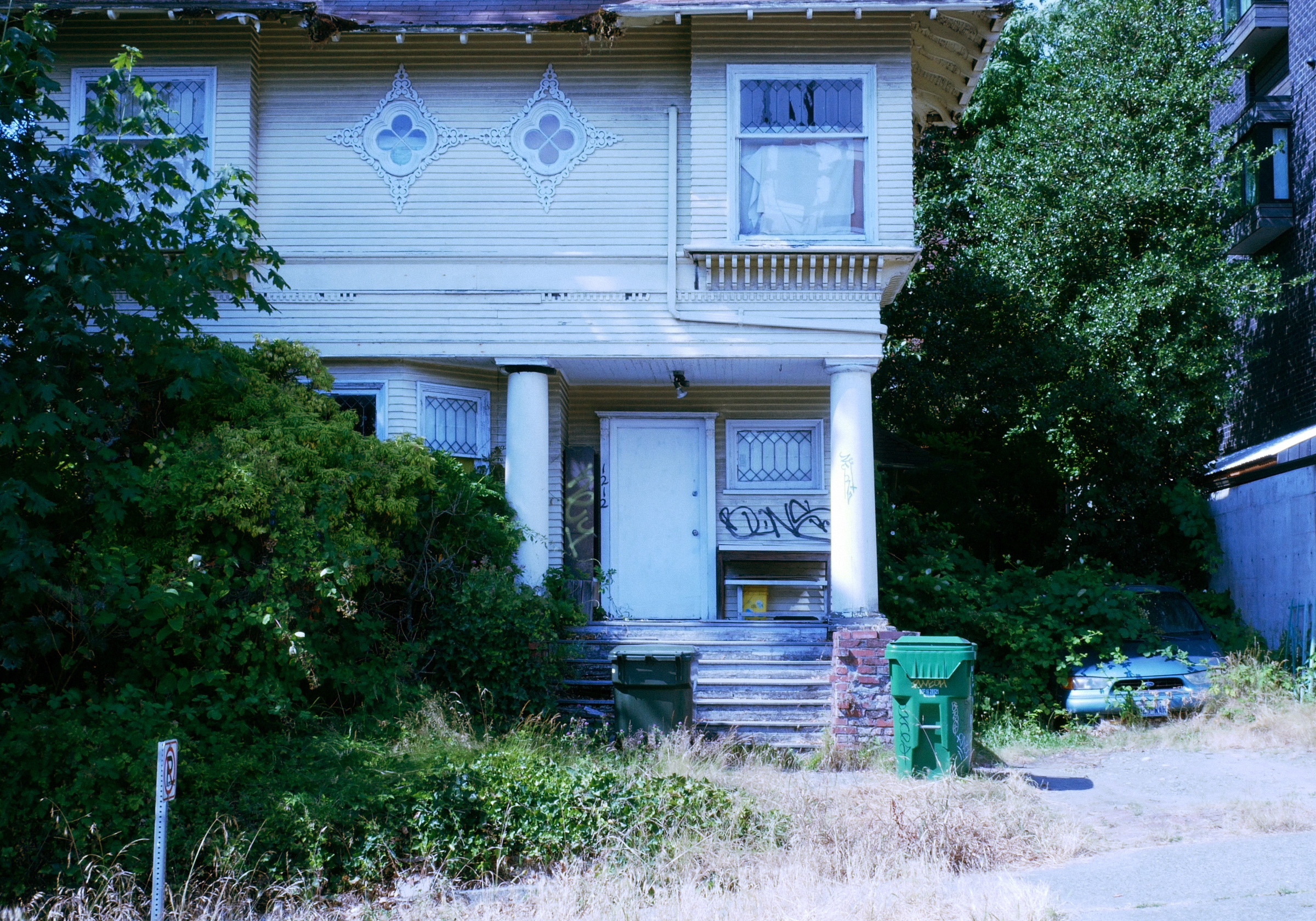Seattle's urban fabric faces a growing blight: derelict buildings that threaten public safety, undermine community aesthetics, and pose significant challenges for city management.
The city’s recent spike in fires related to these neglected structures has prompted a critical evaluation of the risks and ramifications they present. This detailed analysis delves into the hazards associated with derelict buildings, the comprehensive responses initiated by Seattle's administration, and the broader implications for urban planning, public safety, and the insurance industry.
The urgent issue of derelict buildings in Seattle
Recent developments in Seattle have cast a spotlight on an escalating urban crisis: the peril posed by derelict buildings. A report has identified 40 vacant buildings in the city as hazardous, underscoring a growing concern that resonates across public safety, urban development, and community well-being sectors.1 These buildings, marked by their dilapidation and neglect, have become focal points for urgent legislative and safety actions.
The so-called Jumbo Fire, which ravaged an abandoned warehouse in November 2023, exemplifies the significant risk these structures pose. This event was not an isolated incident but part of a disturbing trend of fires in vacant properties that have taxed local fire department resources and heightened risks to both firefighters and residents alike.2 The fire not only caused extensive property damage but also triggered a reassessment of how the city manages its growing number of uninhabited and unsafe buildings.
 Derelict building fires, like the Jumbo Fire, have prompted
Derelict building fires, like the Jumbo Fire, have prompted
new Seattle dangerous building legislation.
In recent years, vacant building fires have caused increasing concern:
| 2021 | 77 fires |
| 2022 | 91 fires |
| 2023 | 130 fires |
| 2024 (first four months) | 30 fires |
In response to growing this spiking crisis, Seattle Mayor Bruce Harrell proposed and signed into law a new piece of legislation aimed at expediting the city’s process to take action against hazardous vacant buildings. Included in the legislation, city officials are now able to demolish buildings deemed too dangerous to remain standing.3
These measures reflect an urgent need to address not only the material danger derelict buildings pose within our communities but also the legal and bureaucratic hurdles that have historically waylaid efforts to address such threats.
In addition to the new legislation, the Vacant Building Monitoring Program, aimed at preventing these emergencies by closely monitoring and inspecting vacant properties, enables city officials to pinpoint areas of interest and take remedial action swiftly.4 Recent fires have indicated that monitoring alone may be insufficient to mitigate risks unless coupled with proactive enforcement. Together, Harrell’s legislation and the Vacant Building Monitoring Program form a broad strategy of managing immediate hazards and integrating trouble sites into Seattle’s long-term urban planning and development goals.
Derelict buildings have become a conspicuous hazard in Seattle’s dynamic urban landscape, an issue exacerbated by the city’s fast-paced real estate market and ever-increasing cost of living. The risks associated with these buildings are manifold: structurally unsound and often unsecured, they attract criminal activities and unauthorized occupants, which can lead to fires and other safety incidents, increasing the risk of injury and death among first responders and civilians alike.
Impact on key stakeholders
Fire departments
Derelict structures pose a persistent and complex challenge to first responders. Unpredictable structural integrity and hidden hazards (obscured exists, weakened floors, unexpected collapses) elevate risk during firefighting operations. Poorly maintained properties can lead to an accumulation of flammable materials, further increasing the risk of rapidly spreading fire.
Insurance industry
Vacant buildings, unattended and undermaintained, pose a ominous exposure for the communities in which they exist. These structures are more susceptible to water damage, fire, and vandalism, all of which can result in substantial claims and large payouts. To further confuse the process, ambiguous ownership and responsibility can complicate claims processes, increasing the administrative burden and financial uncertainty. The frequency of claims associated with derelict properties underscores the need for specialized risk assessments and possibly higher premiums to account for the increased risk.
Local communities
Derelict buildings affect local communities by diminishing the quality of life, lowering property values, and fostering crime.5 They become magnets for illicit activity, from vandalism to more serious crimes, which degrades neighborhood safety and can lead to declining property values.6 For nearby residents, derelict buildings can promote a sense of neglect and despair, impacting community morale and deterring future investment.
Tackling the root causes
The issue of derelict buildings is closely linked to broader economic and developmental challenges. Among other factors, high property values and complex regulatory environments can delay redevelopment processes, leaving buildings vacant and in disrepair.

Housing crisis
From 2012 to 2019, the median housing cost for Seattle households rose by 46%, a housing crisis that exacerbates the problem of derelict buildings.7 High costs and low availability force more properties to remain unused or become makeshift shelters. Addressing this requires providing better support and regulation for buildings that fall into disuse, thereby reducing the likelihood of their becoming derelict.
Legislative hurdles
Current statutes often make the removal or renovation of existing structures challenging. The complex web of legal requirements for demolition or redevelopment can delay the disposal of unsafe buildings, allowing them to deteriorate further and pose greater risks to the community. Reforming these laws to streamline processes and reduce bureaucratic hurdles is essential for effective management of derelict properties.
For the fire department, officials are required to work through the Seattle Department of Construction and Inspections (SDCI) to either fence off, reinforce, or demolish problem structures. According to Seattle Fire Department (SFD) Chief Scoggins, this process can take upwards of 18 months to complete.8
First steps: Seattle’s legislative and strategic response
The city has been working to deal with the issue of derelict buildings and properties for years, with significant progress made in recent months.
Proactive legislation
As mentioned previously, Seattle has implemented aggressive legislative measures aimed at managing the risks associated with derelict buildings.
This includes laws that streamline the process for the city and fire department to intervene in securing, renovating, or demolishing unsafe structures. The new legislation gives the fire chief authority to declare structures a “public nuisance”, enabling them to act with immediacy. The legislation also mandates regular inspections and sets strict penalties for non-compliance, aiming to compel property owners to maintain building safety standards.
“While the City has taken steps to encourage adaptive reuse of vacant structures for new purposes, we cannot allow these unmaintained structures to put lives and property at risk from trespassers, arson, and other crimes. This legislation will give the Seattle Fire Department a new tool to take quick action to remedy derelict buildings that threaten the health and safety of our neighborhoods.” – Bruce Harrell
Enhanced enforcement and compliance
Recent and past legislative efforts have enhanced the city’s enforcement strategies, aimed at ensuring compliance with building codes and safety regulations. This involves more frequent inspections by both the SDCI and SFD deploying dedicated teams to handle cases involving derelict buildings, including the Vacant Building Monitoring Program.
Vacant Building Monitoring Program
Originally launched in 2019, this initiative is designed to combat urban blight associated with vacant buildings.9 Managed by SDCI, the program aims to reduce the chance of unoccupied structures falling into a state of dilapidation and, ultimately, posing safety hazards for the local community.
The program helps ensure owners maintain “vacant building standards”. Per the SDCI criteria, premises need to be “secured and maintained to prevent unauthorized entry and deterioration from the weather”, and “ kept free of debris, overgrown vegetation, parked cars, and graffiti.”10
Here is how the program operates:
Enrollment
- All permits that include vacant buildings automatically enroll in the program.
- When SDCI receives a complaint about an improperly maintained or secured vacant structure, the building is enrolled into the monitoring program, requiring the owner to fix violations or be subject to civil penalties and other fees.
Inspection
- Enrolled structures, whether through the permitting process or complaint, are inspected monthly to ensure compliance.
Unenrollment
- Buildings are unenrolled from the Vacant Building Monitoring Program if:
- Three consecutive months of inspection turn up no violations
- The building is reoccupied or demolished
SDCI proactively encourages property owners to keep buildings occupied while awaiting permit approvals, preventing decline and neglect while maintaining aesthetic and safety standards.
SDCI currently monitors roughly 300 vacant buildings.
Community collaboration initiatives
Recognizing the importance of community involvement, Seattle has launched initiatives to foster collaboration between residents, property owners, and local authorities.
The city has established a hotline for residents to report suspected derelict properties, facilitating quicker interventions and more effective monitoring. The Violation Complaint Line can be reached at (206) 615-0808. Learn more about making a complaint.
Strategic actions for insurers
In addressing the challenges posed by derelict buildings, insurers face a specific risk: the identification of such properties and their proximity to insured assets within their portfolios. This risk is not only about recognizing the potential for direct claims but also understanding how the presence of these buildings can impact the broader risk landscape of the areas they insure. To effectively manage this exposure, insurers can leverage available data resources and engage in proactive risk management strategies.
Actionable steps:
Data Integration: Insurers should integrate city-provided data on derelict buildings into their geographic information systems (GIS). This integration allows insurers to visually map the proximity of high-risk properties to insured assets, thereby enabling more precise underwriting and risk pricing.
Regular Updates and Monitoring: Establish routines for regularly updating internal databases with the latest information from city records; maintaining an up-to-date view of the risk landscape enables accurate policy and premium adjustment.
Proactive Communication with Policyholders: Communicate with policyholders in high-risk areas about the potential risks and encourage preventive measures. This helps both mitigate risk and fosters a partnership between the insurer and the insured.
Conclusion
Significant strides in legislative and strategic responses set a precedent for proactive urban management. While Seattle’s efforts are important, their efficacy will take time to assess.
All stakeholders, including insurers, must maintain a vigilant and proactive approach to this issue. Only through persistent engagement and strategic innovation can we ensure that the evolving needs of urban safety and development are met, safeguarding both people and properties against the latent risks of urban decay.
[1] KOMO, https://komonews.com/news/local/40-vacant-seattle-buildings-deemed-dangerous
[3] Seattle.gov, https://harrell.seattle.gov/2024/06/06/mayor-harrell-signs-legislation-to-expedite-demolition-and-remediation-of-dangerous-vacant-buildings-in-seattle/
[4] Seattle.gov, https://www.seattle.gov/documents/Departments/SDCI/Codes/VacantBuildingMonitoring.pdf
[6] Cleveland Fed, https://www.clevelandfed.org/publications/working-paper/2011/wp-1123-the-impact-of-vacant-tax-delinquent-and-foreclosed-property-neighboring-homes
[7] Seattle.gov, https://www.seattle.gov/documents/Departments/OPCD/SeattlePlan/Housing_IssueBrief.pdf
[8] FireRescue1, https://www.firerescue1.com/firefighter-safety/seattle-mayor-pushes-bill-giving-fire-chief-power-to-demolish-abandoned-buildings
[10] Seattle.gov, https://www.seattle.gov/sdci/codes/codes-we-enforce-(a-z)/vacant-building-standards








